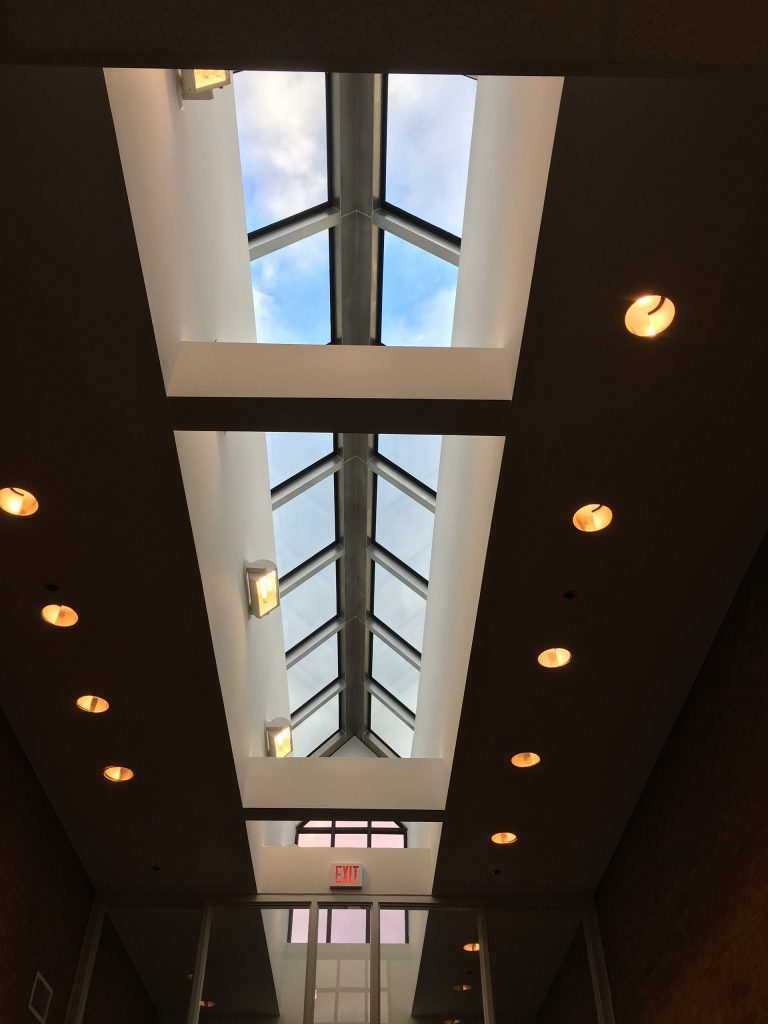
Have you ever wondered how skylights work exactly? As in, how do skylights let sunlight in, without bringing you sun-related problems? The answer is in the glazing process. These glaze options can including tints that absorb heat, insulation, and low-emissivity coatings. Some manufacturers will install insulation coatings between the glazing layers to create a more thermally efficient structure. The advanced glazing utilized for skylights gives you the opportunity to enjoy the many positive benefits of natural lighting without the need to deal with excessive heat, glare, and fading of your interior. Learn more about popular glazing solutions so you can harness the beauty and usefulness of daylight throughout the building.
Glass Glazing and Options
We know that our skylight customers have unique needs for their buildings. That’s why we offer four different glass glazing options:
- Standard Glass – This is a tempered glaze over tempered glass–without insulation.
- Safety Glass – Safety glass involves tempered over the laminated glass. Safety glazing is suitable for skylight glass in many environments as it is quite durable.
- Hurricane Glass – Hurricane glass glaze is specifically designed to withstand falls, leaks, class 4 hail, and missile impact. It is a tempered glaze over a thicker laminated glass than the safety glass option.
- Ballistic Glass – Sometimes referred to as bulletproof glass, ballistic glass is particularly strong against projectiles such as bullets. Beyond just a glazing option, this glass is made for FEMA 361 Safe House Standards and military standards.

Polycarbonate Glazing Options
Polycarbonate skylight systems also have glazing options to strengthen the skylights and provide benefits such as blocking some of the UV rays from the sunlight. Plastic glazing is often less expensive and less prone to breading than other types of glaze. It is important to note that plastic surfaces are prone to scratching and the coating can become discolored over time. Some plastic coatings will allow UV rays in, but a special film can be used to decrease fade damage to furnishings.
These glazing options can improve the overall look and performance of polycarbonate skylights; however, in many cases, they still fall short of what glass can provide.
Which Glaze is Right For Your Project?
At the end of the day, choosing the right glazing option for your skylight project comes down to your location and what the skylights may be exposed to. In a relatively sheltered environment, safety glass may be more than sufficient to protect the skylights and your building from most damage. However, hurricane glass is recommended for buildings that experience heavy wind on a regular basis. Blast-resistant and ballistic glass glaze can also be a good choice too as they provide extra protection not only to the glass but to anyone inside the building if an incident were to occur.
Skylights continue to grow in popularity, in part because of the benefits glazing adds–making glass or polycarbonate skylights stronger and safer. At Vtech, we are committed to helping our customers choose the ideal glass and glazing methods for skylights so that they are as functional as they are attractive. If you would like to discuss your skylight needs with an expert, reach out to our team today. We look forward to working with you on your skylight installation project.